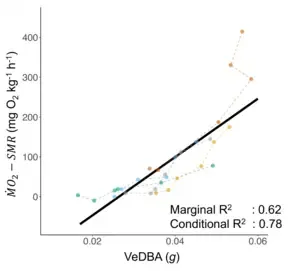
Revolutionary Video Technology Unveils Animal Energy Use Like Never Before!
2025-04-25
Author: Arjun
Energy is the lifeblood of all living organisms, a critical driving force behind behavior and evolution. Yet, understanding how animals consume energy has been a tough nut to crack. With countless biological adaptations designed to secure energy, the quest to quantify this vital resource remains challenging.
One of the biggest energy drains for animals is movement. For species that are highly mobile, the way they move can provide significant insights into their energy expenditures. Traditionally, methods for measuring energy spent on movement have relied on bulky equipment, limiting their applicability across various species.
In a groundbreaking paper published in the Journal of Experimental Biology, researchers from the Marine Biophysics Unit at the Okinawa Institute of Science and Technology (OIST), in collaboration with Professor Amatzia Genin from the Hebrew University of Jerusalem, have unveiled a cutting-edge technique using video and deep learning for tracking energy use during movements.
Dr. Kota Ishikawa, the study's lead author, states, "Previously, the best methods were constrained by space due to the need for wearable devices. Now, with video technology, we can explore energy usage more inclusively, spanning a wider range of species."
Historically, researchers relied on Dynamic Body Acceleration (DBA) techniques, which involved measuring the oxygen consumption of an animal during specific tasks inside controlled lab environments. Oxygen, consumed during aerobic respiration, serves as a reliable indicator of energy usage.
However, moving this method outdoors has been beset by complications. Wearing accelerometers, which must weigh significantly less than the animals themselves, has blocked studies on numerous small vertebrates—roughly half of the world’s species. As Dr. Ishikawa highlights, any additional weight can alter movements, especially in aquatic or avian species.
The research team’s innovative solution is beautifully simple: by utilizing two cameras to capture video from different angles, they can reconstruct an animal's 3D movement. They focused on a damselfish swimming in a tank, employing just a few video frames to train a deep learning algorithm to follow the fish’s movements flawlessly.
Once cameras are set up—both in labs and in natural environments—researchers can accurately estimate the energy consumption of animals in action. For instance, the video-based DBA approach opens up research opportunities into collective behavior, such as the energy dynamics within fish schools.
"We've long wondered about the energy expenditure of schooling fish," notes Dr. Ishikawa. "Do the leading fish in a school expend more energy? Is schooling a more efficient movement strategy? This knowledge could reshape our understanding of fish behavior and ecology."
With this innovative video-based technique, a whole new world is opening up for studying energy usage in smaller vertebrate species, expanding the horizons of research into the rich tapestry of life on Earth.





 Brasil (PT)
Brasil (PT)
 Canada (EN)
Canada (EN)
 Chile (ES)
Chile (ES)
 Česko (CS)
Česko (CS)
 대한민국 (KO)
대한민국 (KO)
 España (ES)
España (ES)
 France (FR)
France (FR)
 Hong Kong (EN)
Hong Kong (EN)
 Italia (IT)
Italia (IT)
 日本 (JA)
日本 (JA)
 Magyarország (HU)
Magyarország (HU)
 Norge (NO)
Norge (NO)
 Polska (PL)
Polska (PL)
 Schweiz (DE)
Schweiz (DE)
 Singapore (EN)
Singapore (EN)
 Sverige (SV)
Sverige (SV)
 Suomi (FI)
Suomi (FI)
 Türkiye (TR)
Türkiye (TR)
 الإمارات العربية المتحدة (AR)
الإمارات العربية المتحدة (AR)